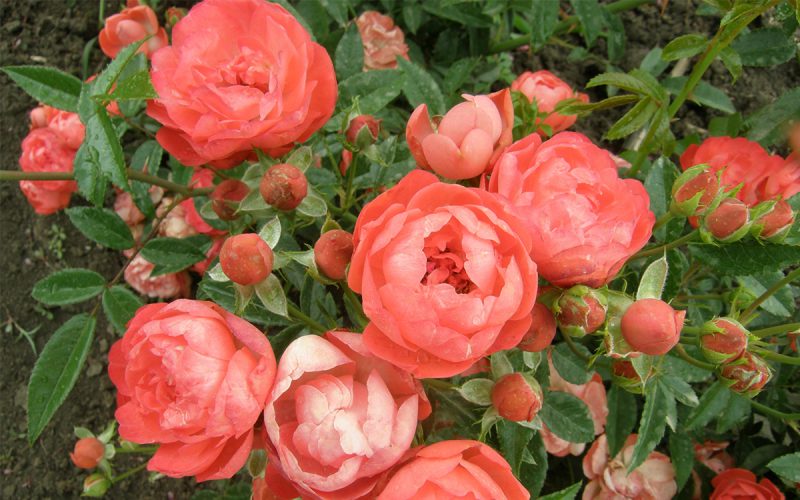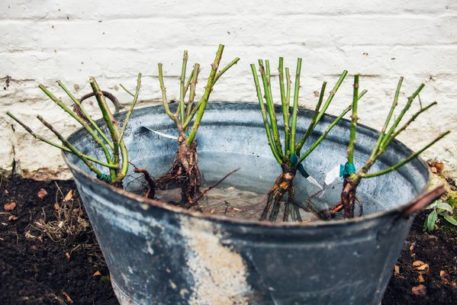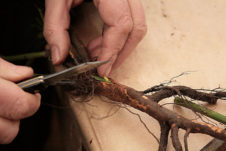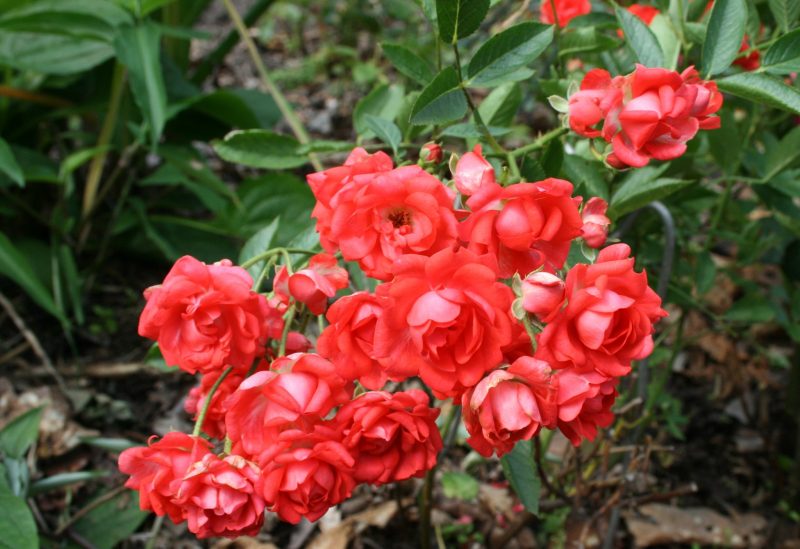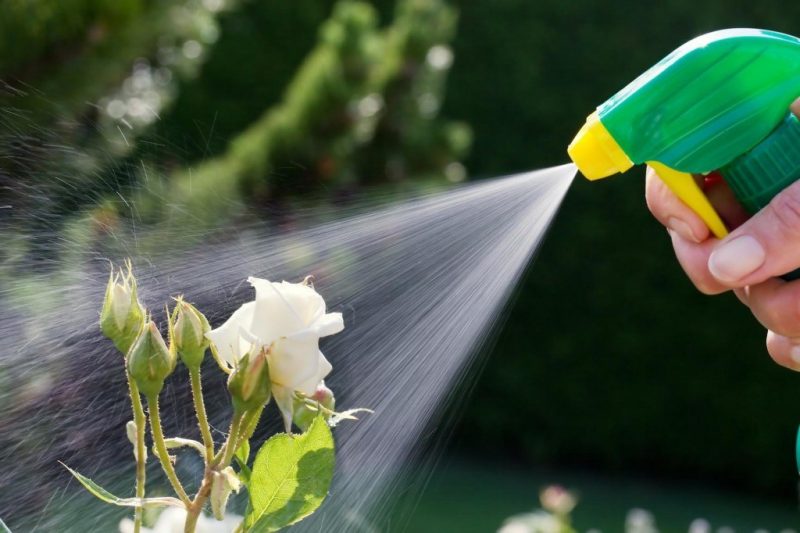A beautiful stranger called polyanthus rose has advantages that modern varieties can envy. It is more modest in size and color of flowers, but it can grow well in a flower pot on the windowsill or in rose gardens on household plots of the Urals and Siberia due to its excellent frost resistance.
Material Content:
Polyanthus rose - what is this flower?
Polyanthus rose - what is it that became known at the end of the XIX century. This group of varieties appeared for the first time in France thanks to hybrid tea and small-flowered roses. The authorship of the selection belongs to Jean-Baptiste Guillot.
The name "polyanthus" literally means - a multi-flowered rose. Indeed, during flowering, the bushes are strewn with an abundance of flowers - up to 50 can be found in the inflorescence. This rose is resistant to adverse conditions, it is grown even in Siberia.
There are polyanthus roses with an unusual white-pink, salmon, violet-purple color, but there are no varieties with yellow flowers in this group.
Description of varieties
Most polyanthus roses are low plants, branched, with small semi-double or simple flowers that do not have a pronounced aroma.
Popular varieties:
- Polyantha Rose Royal Minueto - “Royal Minueto” is a compact bush about 60 cm in height. It is strewn with white roses with red edges during flowering.
- Polyantha Rose Betty Priority - Betty Prior's flowers are saturated pink with a light base. The bushes are quite large, can reach 80 cm in height.
- Polyantha rose masquerade - the polyanthus rose “Masquerade” differs from other varieties in unusual flowers that change color during flowering: at first they are yellow, then they become raspberry. Bushes grow to 70 cm, are resistant to disease.
- Polyantha rose Lena - “Lena” refers to a group of roses with high frost resistance. Bushes 60 to 90 cm tall with simple pink and white flowers about 4 cm in diameter.
- Polyantha rose Angel wings – the variety "Angel Rose" or "Angel Wings" is popular in indoor floriculture. This is a miniature bush about 30 cm high, the flowers are pale pink (almost white).
Thanks to polyanthus and tea roses, a group of modern floribunda varieties has been created that are disease resistant and have a strong pleasant aroma.
Site selection and soil preparation
The requirements for growing conditions for polyanthus roses are the same as for other species - plenty of sun, protection from the wind, fertile and light soil. It is undesirable to choose a place for the rosary on the north side of the garden in a wetland or lowland where moisture will accumulate.
It is better to start preparing the site in the fall. In addition to removing weeds, it is necessary to introduce rotted organics - humus, compost, horse manure. In the spring, dig the soil and make holes for seedlings.
Landing at the cottage
In garden centers they sell seedlings of polyanthus roses with an open root system. For planting, it is better to buy plants with unopened buds, strong stems and a well-developed root system.
The best time for planting is the end of April, May or the beginning of June (it all depends on the region of cultivation). When the threat of freezing frost passes, the soil warms up, which means there will come a favorable time for the successful rooting of cuttings.
Wells are prepared in advance so that the earth sits a little. The condition of the rose in the first 2-3 years and the total duration of its life will depend on the fertilizers laid in the planting pit. You can use biohumus (1 kg), ash (1 handful) and nitroammophoska (30 g).
Step-by-step description of the landing process:
- Saplings with an open root system are immersed in water for 1 hour.
- Roots and shoots are slightly cut.
- Fertilizers are added to the wells, mixed with fertile soil.
- They plant roses, spreading their roots and deepening the vaccination site by 5-8 cm.
- Water the wells after planting, add dry soil and water again.
It is advisable to close the newly planted cuttings with greenhouses from cut plastic bottles wrapped in thin agrofibre. After 2-3 weeks, when the seedlings take root, the greenhouses can be removed.
Care and growing flowers
Polyanthus roses are frost-resistant, grow beautifully in central Russia, can be root or grafted on rose hips. Bloom from late spring to early September. They are unpretentious in care - they need regular watering, loosening the soil, top dressing, protection from pests and diseases, and, of course, pruning.
For successful cultivation of polyanthus roses, it is necessary to correctly trim the bushes during the entire flowering period.
Cut off faded inflorescences for 2-3 internodes. This is enough to form lateral shoots, and the rose bloomed again during the summer. In instances grafted onto the dogrose, wild-growing shoots appear under the root.
In March, roses are fed with nitrogen fertilizers. Then they switch to potassium-phosphorus preparations with additional trace elements. From mid-July, top dressing is stopped so that roses prepare for winter: they stop growing and become lignified before the onset of cold weather.
During the last flowering, wilted buds do not cut. This allows the plants to mature and grow stronger. In the conditions of the Moscow Region, the Urals and Siberia, a polyanthus rose requires the usual air-dry shelter for the winter.
How can I propagate
The advantage of the polyanthus rose is that it can easily be grown from seeds and cuttings. Seeds are sown in late February or early March in containers with sterile fertile soil.Emerging shoots are kept under a phytolamp, away from cold window sills and drafts. Young plants are transplanted into the open ground in late May or early June.
Cuttings are cut during active growth - in June or July. They take root quickly in light, nutritious soil under plastic bottles or a clear bag. After about two or three weeks, when the cuttings take root, the shelter is removed. Then they monitor the humidity of the substrate and feed young seedlings with complex preparations for roses.
Own specimens can also be propagated by dividing the bush in spring or in August.
Disease and Pest Prevention
Despite the resistance of polyanthus roses to fungal diseases, they are treated with fungicides in the usual way:
- in spring - immediately after removal of the shelter;
- at the beginning of summer - before flowering;
- in September.
Drugs for viral infections do not yet exist, so the affected plants are dug up and destroyed.
If the weather is rainy, during the summer additional preventative treatments for rust, powdery mildew, root rot will be needed. So that pathogens do not remain on the site, in the autumn they dig the earth between the bushes, clean and burn all the cut foliage.
Use in landscape design
A feature of polyanthus roses is a poor palette of colors: most often they are painted in red and pink tones, less often - in white. This disadvantage is compensated by abundant flowering and its duration. Low-growing branching bushes look good in the rabatki and near the curbs. They will serve as a wonderful decoration of various areas of the garden - the path leading to the gazebo, secluded benches, flower beds under the bedroom windows. Red and pink varieties look cozy against the background of the white walls of the house, white ones against red brick buildings or a wooden fence.
Polyanthus roses are suitable as indoor plants. Compact size, unpretentiousness, lack of intrusive aroma make the culture very convenient in pot cultivation. In spring, containers with roses are taken out to the garden, and for the winter they are cleaned. Flowers are successfully combined with small weigels, cinquefoil and spirea.


